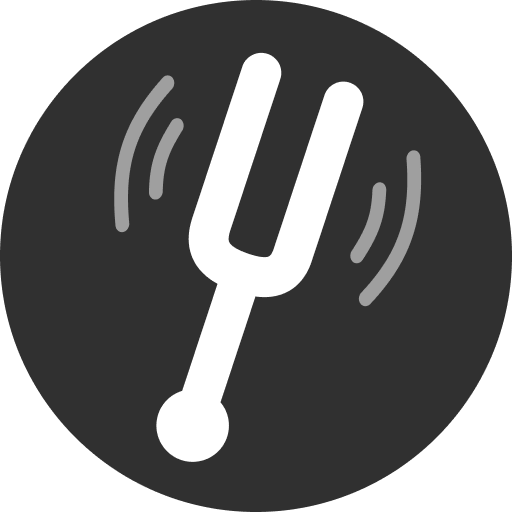Tune your guitar in no time with this precise, easy-to-use microphone tuner. It’s totally free to use!
Use the interactive fretboard to play sounds of different frets on the neck. Here’s how open strings in the standard guitar tuning sound like:
How to tune your guitar online with a microphone tuner
The idea is simple: you play an open string on your instrument, and tuner shows if it sounds at the right pitch. If the string doesn’t sound in pitch, the tuner shows you in which direction you’ll want to adjust the string: make it sound higher by tightening it, or lower by loosening the string.
- Click “Turn on Microphone” button to give the app permission to access your mic.
- Start tuning your guitar from the thickest string (the one with the lowest sound). On the left side of the tuner there’re buttons for each string – you can click them to hear how strings should sound for correctly tuned guitar.Play the string on your guitar. The tuner will turn green and the needle will be in the middle if the string is tuned correctly. If the needle is at the left side, the string should be tightened more, if on the right side – loosened. Adjust the string as necessary.
- Repeat the same process for other strings, moving from lowest strings (thicker) to the highest (thinner).
- When done, repeat the whole process from the beginning for each string for the final fine tuning.
Something’s not working? Tuner can’t determine the pitch?
Tuning advice & tips
- Start tuning in absolute silence.
- Try to keep the instrument as close to the microphone as possible.
- If possible, increase sensitivity of your microphone (e.g. using system settings).Tuner won’t be able to determine the pitch if the guitar sound is too soft or far away from the microphone, or there is noise, music or voices.
- Pluck the string where the sound is softer – closer to the neck, away from the bridge. You can even pluck the strings above the fretboard, in their middle. This will produce a mellow sound which is much easier for the tuner to pick up, compared to sharper tone when strings are played closer to the bridge.
- Tune lower (thicker) strings before the higher (thin) strings Otherwise if you start with thin strings first, by the time you tune the lower strings they may mess up the tuning because of their greater tension.
- Approach the target pitch from below, not from above When tuning a string, you can approach the target pitch either from below or from above.
Approaching it from below (e.g. starting with a lower pitch, then tightening the string) is the superior method: this way, the tuning will last longer. Also, there’s less risk to accidentally break the string!
 MyGuitarTuner
MyGuitarTuner